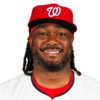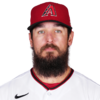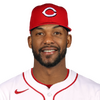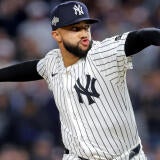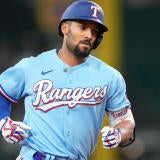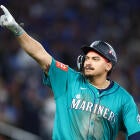Fantasy Baseball Dynasty Update: Players, prospects who've gained the most value include Chris Paddack, Josh Bell
Different assessments come into play for dynasty leagues. Scott White identifies some of the risers and fallers for formats with more of a long-term focus.
Dynasty leagues require a more patient approach.
When your focus is on the here and now, you assess players for the here and now, and that's generally how people like me discuss them. But when you manage a team in a dynasty league, you can't be as reactive. You have to move at a more deliberate pace knowing a misstep could cripple your team for years to come.
So when assessing which players and prospects have gained or lost value to this point in 2019, understand that permanence was of the highest importance to me. It couldn't just be an inkling. I had to be confident enough to live with the repercussions for the players I've selected here.
As best as I can determine at this early stage, here are the ones who've most altered their value for the long haul — and by long haul, I mean long, long hall.
Players who have gained the most value in dynasty
No really, Cody Bellinger is good? Look, it wasn't so obvious just seven short weeks ago. For a guy whose main contribution was supposed to be home runs, he hit only 25 of them despite appearing in all 162 games last year and was rarely starting against left-handers by season's end. Not only has he regained his power stroke this year, but he has cut his strikeout rate in half, repaired that nasty platoon split and begun showing off his wheels more. It's been a perfect storm of progress for a 23-year-old with his whole career still ahead of him.
Though the minor-league numbers were excellent, Chris Paddack was a divisive prospect who seemed like he still had a long road ahead of him. But he accelerated his timetable with a dominant spring training and has kept it going into the regular season, piling up quality starts despite the strictest of pitch limits — a testament to his efficiency. He's sure to face an innings limit as well, which puts a cap on his 2019 value, but the Padres' insistence on handling him carefully bodes well for his dynasty outlook.
Even more so than Bellinger, Josh Bell's stock took a massive hit in 2018, which should serve as a reminder that development is ongoing and you shouldn't be too quick to bail on a long-term investment. The time Bell spent tinkering with his launch angle has paid off in the long run, transforming him from an interesting plate discipline guy whose bat might not play at first base to an MVP-caliber middle-of-the-order hitter.
Matthew Boyd would also make a fine choice here as an out-of-left-field ace, but Caleb Smith is the more overpowering of the two, featuring not just one dominant pitch, but three, and ranking between Blake Snell and Max Scherzer in swinging strike rate. You'd prefer him to be younger than 27, of course, but there should be some good years on that arm still. If you stumble into an ace of any age, it's hard to complain.
It was a tough call between Jorge Polanco and Paul DeJong as well, but Polanco has a wider variety of talents that better protect him from a possible bottoming out. The power breakthrough is believable given his 25 years of age and elevated fly-ball rate, and yet it hasn't come at the expense of his elite line-drive tendencies that make his .350 (or so) BABIP not completely implausible. It's like what you were hoping to get out of Corey Seager but with a much lower investment.
Prospects who have gained the most value in dynasty
Yordan Alvarez, OF, Astros
Alvarez was thought to be a fine hitting prospect coming into the year. He has turned out to be the prevailing one, flirting with the minor-league lead in home runs while sustaining a batting average over .400. It's kind of a joke he hasn't been promoted yet, but rest assured whoever owns him in your league has already turned down a couple dozen trade offers for him by now.
Luis Robert, OF, White Sox
Robert was plenty hyped going into last year but then tore a ligament in his thumb and wound up hitting zero home runs in the 50 games he did play. The traditional prospect rankings didn't judge him too harshly, but disenchantment would have been a reasonable response from Fantasy owners. This year, the 21-year-old has already rocketed to Double-A with best-prospect-in-baseball-type numbers. He could stand to have more plate discipline, I guess.
Casey Mize, SP, Tigers
Mize was the first overall pick last year, so nobody was doubting his prospect credentials. We hadn't gotten much of a chance, though, to see what he could do. Now that we have, it's already apparent he's too good for the minors, and it'll be fun to see the sort of excuses the Tigers concoct to keep him there. It's rare he allows more than two hits in a game.
Matt Manning, SP, Tigers
The Tigers' first-round pick in 2016 is looking more and more like an ace-in-waiting himself. He always showed big strikeout potential, but some inconsistencies with his delivery made command an issue. His walks are way down, though, in the early going this year — to the point he looks almost like a control artist — and basically all of his skills are shining through as a result.
Zac Gallen, SP, Marlins
Gallen was hardly considered a prospect coming into the year but has proven to be the hero Fantasy players need at a time when reliable starting pitching is in such short supply. He has compiled a 1.79 ERA with well over a strikeout per inning in nine starts, five of which have been seven innings or more and five in which he allowed two hits or fewer. Hard to say whether his middling stuff will continue to play up in the majors, but an improved arm slot has done wonders for his command.
Players who have lost the most value in dynasty
It's weird what's happened to Travis Shaw, who looked like a steady power hitter with plus plate discipline and second base eligibility. The plate discipline disappeared on him in spring training and has led to a 32.5 percent strikeout rate in the regular season — nearly twice what it was last year. Such an abrupt decline doesn't make much sense for a 29-year-old, but the Brewers have already decided enough is enough, calling up rookie Keston Hiura to start in his place.
It may seem like a "duh" selection for redraft owners seeing as Miguel Andujar is out for the year with a torn labrum in his shoulder, but it's his dynasty value that concerns me here. We saw how poorly he hit when attempting to play through the injury, going 3 for 34, which is why he ultimately decided to have it. Shoulder injuries have a way of compromising a hitter's power, though, and any hiccup en route to becoming what he once was just gives the Yankees another excuse to opt for a third baseman who isn't such a liability on defense.
Danny Jansen had the inside track on everyday duty and a low-risk hitting profile built on plate discipline, but things couldn't have played out worse for the rookie catcher, who's now out of the lineup about half the time and is possibly at risk for demotion. Sometimes catchers take longer to break through offensively because so much of their focus is on working with the pitching staff, but no dynasty player is looking at Jansen as the long-term solution at a troublesome position anymore.
Whether because he was a rare power-speed threat or because of lingering suspicions he would develop into something more, Wil Myers was still regarded as a significant Fantasy asset coming into the season. And since he's still on the right side of 30, his longevity wasn't really in question. Now, though, he's having trouble getting everyday at-bats in a crowded outfield, and because his swing-and-miss tendencies are leading to his usual so-so numbers, is there a path to more?
Mike Foltynewicz may yet turn out OK in 2019. He has had trouble regaining his velocity since missing time with an elbow injury, and Sunday's start was a step in the right direction. What his struggles have confirmed, though, is that his secondary stuff isn't good enough to sustain him whenever his velocity goes, and he won't be able to sling it at 98 mph for too much longer. He's already 28, after all.





